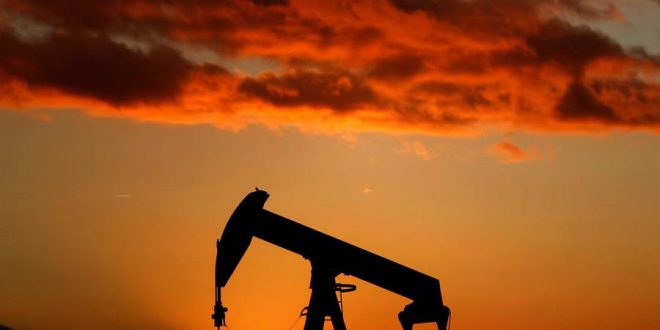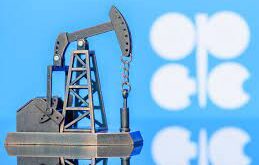The U.S. shale industry is expected to account for nearly three-quarters of global supply growth over the next five years. edging out OPEC producers for market share. At the same time. the shale sector faces both short- and long-term questions about its viability.
Meanwhile. even as demand projections for the 2020s are subject to significant uncertainty. there is a clear shift underway in the nature of consumption. with passenger vehicle demand set to give way to soaring growth rates for petrochemicals.
Shale maintains strong position. but for how long? “Global oil markets are going through a period of extraordinary change.“ the International Energy Agency declared in its latest medium-term oil outlook. Oil 2019. “The United States is increasingly leading the expansion in global oil supplies.“ In fact. U.S. shale is set to “dominate supply growth“ over the next few years. accounting for 70 percent of the increase in production capacity through 2024. A few other non-OPEC countries add some meaningful. though smaller. contributions. including Brazil. Canada. Norway and Guyana. Combined they add roughly 2.6 mb d through 2024. compared to the 4 mb d coming from the U.S. in the same period.
At the same time. OPEC sees its position somewhat eroded. with total capacity dipping by 0.4 mb d. according to the IEA. While much of those troubles stem from declines in Venezuela and Iran. ongoing increases in output from U.S. shale force OPEC countries to restrain output growth.
The IEA warned that the oil industry is in danger of creating a major supply gap in the 2020s. due to the shortfall in upstream investment.
The analysis seems to be a full-throated endorsement of a future dominated by American shale drillers. but there are some notable caveats contained in the report. The IEA warned that the oil industry is in danger of creating a major supply gap in the 2020s. due to the shortfall in upstream investment. Spending still has not recovered substantially from the 2014-2016 oil market bust. Global upstream spending of $500 billion is still roughly $300 billion below the 2014 peak. “Our analysis last year looked at the rates of decline in oil fields and found that to keep production steady. the equivalent of the output from the North Sea needed to be offset each year.“ the IEA said. “This remains true today.“
That comes despite the prediction that U.S. shale drillers add a tidal wave of fresh supply in the coming years. In fact. the IEA issued a second warning. one that was buried a bit beneath the headline of U.S. shale “dominating“ and “leading“ in the supply picture. The agency predicts that while shale drillers will bring huge increases of new production online this year and next. growth will begin to plateau beyond 2020.
Investment bank Standard Chartered picked up on the discrepancy. “The supply growth forecasts after 2020 in the IEA’s base case are not particularly epoch-defining in our view. nor are they likely to push OPEC into a deep state of despair.“ the bank said in a report. “The IEA expects US crude supply to increase 563kb d in 2021. 293kb d in 2022. 54kb d in 2023 and then to decrease 125kb d in 2024.“
In fact. looking at just the years of 2020 through 2024. the U.S. only adds 785.000 barrels per day. or 18 percent of expected demand growth. “The prospect of US crude taking 18% of global demand growth is perhaps unlikely to upset OPEC. nor does it in our view really merit the hyperbole of the report’s foreword and the talk of the dominance of US supply growth in the medium term.“ Standard Chartered concluded.
Meanwhile. in the short run. there are also questions about the U.S. shale sector’s viability.
Meanwhile. in the short run. there are also questions about the U.S. shale sector’s viability. Between 2011 and 2018. the U.S. shale sector burned through around $200 billion in cash. Despite promises that aggressive drilling and huge production growth would translate into hefty profits. such predictions have turned out not to be the case. At this juncture. investors have become impatient. demanding spending cuts and a focus on cash flow rather than production growth. The IEA marveled that the fact that this year. for the first time since 2015. global upstream spending on conventional assets could rise by more than for U.S. shale.
Even as small and medium-sized E&.Ps struggle with financials. the oil majors are expanding their ambitions in shale. ExxonMobil and Chevron each have their hopes pinned on the Permian. with plans to reach 1 million barrels per day (Mbd) and 0.9 Mbd in the shale basin by 2024. respectively. As a result. shale drilling will increasingly be characterized by the oil majors. rather than the mom-and-pop drillers of the past.
Demand slows. shifts to petrochemicals The demand side of the ledger is no less dramatic. Electric vehicles will erase quite a bit of oil demand growth in the years ahead. While the IEA does not see demand for gasoline reaching a peak. growth slows to less than 1 percent per year. At the same time. consumption of oil in the petrochemical sector rises quickly. “Around the world. more consumer demand means more plastic. which in turn means more petrochemicals.“ despite efforts at recycling. the IEA noted. “Led by the United States and China. we have identified more than 50 major projects due to come onstream through 2024. These are expected to add 2.2 mb d in oil consumption over the forecast period. accounting for 30% of global growth.“
Two other key factors affecting demand in the years ahead will be consumption for aviation. particularly in Asia. as well as the 2020 regulations on marine fuels by the International Maritime Organization (IMO). After IMO rules take effect next year. which set stricter limits on sulfur contents in marine fuels. demand will drop significantly for high-sulfur fuel oil. Distillates will take on a greater role. scrambling the economics of refining worldwide.
Overall. the IEA argues that supply growth over the next half-decade is a story that largely revolves around U.S. shale. Large-scale long-lived projects have fallen out of favor. which reflects the forecast for uncertain and shaky demand growth in the transportation sector. There is “still no peak in sight“ for demand. the IEA says. but much of the forthcoming increases in consumption will come down to petrochemicals and aviation.
 Iran Energy News Oil, Gas, Petrochemical and Energy Field Specialized Channel
Iran Energy News Oil, Gas, Petrochemical and Energy Field Specialized Channel




